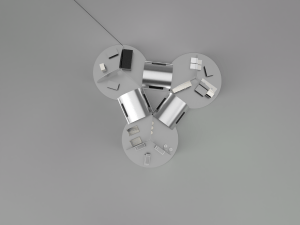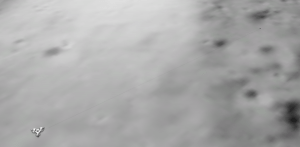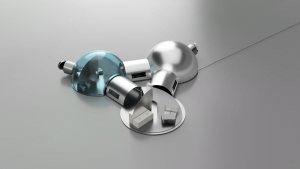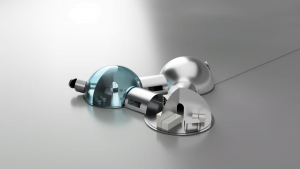Moon Camp Pioneers Gallery 2020-2021
In Moon Camp Pioneers each team’s mission is to 3D design a complete Moon Camp using Fusion 360. They also have to explain how they will use local resources, protect astronauts from the dangerous of space and describe the living and working facilities.
Team: Lichtenbergonauten
Georg-Christoph-Lichtenberg-Schule Kassel Germany 18
External viewer for 3d project
|
Project description
LunEx is one of the mankind’s first lunar settlements. It will be an outpost of humanity, setting new standards for science and exploration. The base will be the home of a crew of 6 astronauts, who will conduct scientific experiments in the unique environment of the moon. Those experiments will pave the way for all future space exploration, which is why building a lunar base like LunEx is crucial for humanity’s expenditure beyond earth. |
|||
|
Where do you want to build your Moon Camp?
LunEx Basecamp will be constructed in the valley of Peary crater, at the lunar north pole. Peary crater provides numerous beneficial geographical features, making it an excellent choice for a future moon base. One of the key advantages is the existence of both nearly permanent areas of light and shadow in the crater due to its extreme location at the pole plus rugged mountains at the rim that shield certain areas from sunlight permanently. This unique duality of properties is highly desirable because a lunar base will have segments that only perform in either sunlight or shadow at their peak (e.g., a photovoltaic system needs a constant exposure of light), whereas areas of shadow limit the amount of harmful radiation from the sun that the astronauts will experience. In addition, it is assumed that water ice exists in those areas of permanent shadow, which is pivotal for the astronauts to survive. How do you plan to build your Moon Camp? Describe the techniques and materials you would use.
The main material for the construction of LunEx will be an aluminum-copper alloy, since it is lightweight and relatively strong yet easy to work with. Because of those excellent properties, it is already used in the space industry a lot. For all objects that do not need to be this strong, like furniture, we will use ABS plastics. We deliberately rejected the idea of using regolith as a building material, as the manufacturing would be complicated and the energy consumption too high. The assembly will take place in stages. All major parts will be preconstructed on earth and sent to the landing side in advance. The job of the first crew will be to put those parts together. The main benefit here is that the assembly is relatively easy and costly maintenance can be reduced, the parts can be produced with very high quality on earth. The environment on the Moon is very dangerous for the astronauts. Explain how your Moon Camp will protect them.
The moon is a dangerous place for any living organism. A human presence inevitably comes with risks to the well-being of the astronauts, however, the design of LunEx decreases those drastically. There are two big hazards which are present constantly, radiation and dust. The most dangerous form of radiation comes from the sun and can cause substantial damage to an astronaut’s health in the form of cancer or in extreme quantities, like during a solar eruption, deadly radiation sickness. We avoid this problem by building LunEx in the areas of eternal shade in Peary Crater, thereby blocking all radioactive particles. However, there is also cosmic background radiation which is less harmful but constant. During a six-month long stay, the effect should not be too bad for the astronauts, but to be sure, we shielded LunEx with a thick layer of liquid water between the inner and outer hull. Water has excellent isolating properties which will reduce the dose of radiation to the astronauts significantly. Explain how your Moon Camp will provide the astronauts with:
|
|||
|
Water
|
Food
|
Electricity
|
Air
|
|
Water will be extracted using the new technology Aqua Factorem, invented by Philip Metzger. The idea behind this concept is small grains of mixed materials will be scooped up and then separated. The ice grains will then be cleaned and melted to obtain liquid water. These ice grains are spread throughout the moon’s surface, but we will use the machine next to the big deposits of water ice that are assumed to be present in Peary Crater. This way, the efficiency can be drastically increased, but even if reaching the ice sheet does not work out, a basic source of water is still present. The base is connected to the Aqua Factorem machine via pipes and once the water reaches the base, it is stored in a tank and the in the hull. To make sure it will not freeze and possibly damage the structure of the base, it is constantly heated. Recycling of water and oxygen will be similar to how it is done on the ISS today. |
To be as self-sufficient as possible, LunEx will grow its own food using High Pressure Aeroponics (HPA). This method works by creating small mist droplets in high pressure, which are used to grow plants. The innovative design comes with the advantages that the plants will grow very fast and have a superior oxygenation. This results in a better nutritional composition. Also, numerous plants are compatible, increasing diversity in the astronaut’s diet. Furthermore, it is easy to expand the capacity of the farm. The overall flexibility is crucial for the success of a lunar mission. Despite the countless benefits of a self-supporting food supply, the plants are not able to fulfill all of the nutritional demands that the crew has, which is why some food has to be brought from earth to ensure a healthy composition of minerals and vitamins. |
Electricity comes from regular photovoltaic solar panels. These will be placed in the areas of permanent sunlight in Peary Crater and connected to the base in the permanent shadow by a cable. The permanent source of light should make large batteries obsolete, but whether those areas are also exposed to the sun during the lunar night is still debated. So, we will start the first mission in the lunar summer and abandon the base after six months. If it is true that there is a constant exposure to the sunlight, the base could be active all the time. For backup, there will be a small accumulator. |
Oxygen will not be brought from earth, but extracted from regular regolith on the moon by using In-situ resource utilization, an idea proposed by ESA intern Sebastian Rohde. It works by using a special form of electrolysis with ionic liquids that stay liquid in space. The benefits of this modern technology are that it is reusable and also works at low temperatures. The fact that regolith is abundant on the moon means that a steady oxygen supply can be guaranteed. Once processed the oxygen will be mixed with carbon dioxide in the base to not risk an explosion. When the concentration of CO2 becomes too high, it can simply be vented out the base. |
|
Explain what would be the main purpose of your Moon Camp (for example: commercial, scientific, and/or tourist purposes).
The LunEx base will be one of the first to be built on the moon. For that reason, its primary purpose is to serve as a model for future forms of human presence in space, and also, to conduct a variety of scientific experiments. Microgravity and the moon itself are both excellent objects to experiment with, providing valuable new insights and technologies for use both in space and on earth. |
|||
|
Describe a day on the Moon for your Moon Camp astronaut crew.
A typical day for the astronauts will start in the morning with all six crew members waking up at the same time. Work shifts are avoided on purpose, because having more people around significantly improves the psychological well-being of the astronauts. Only if an experiment needs constant supervision, will shifts be planned as needed. First, all astronauts will eat breakfast together. The food will be partly self-made from the Aeroponics farm in the base, and partly brought from earth to ensure a healthy supply of vital nutrients that cannot be harvested from the farm. While eating breakfast, mission control on earth will brief the crew about the daily schedule. On a typical day, there will probably be a couple experiments to conduct and one maintenance job for the base. In this example, astronauts will try ways to make regolith fertile. A large experiment like this can only be done on the moon and provides valuable insights feeding future colonies on the moon or mars. Also, two engineers will venture outside the base to check out and possibly repair a solar panel that is not producing electricity. They will climb into their space suits attached to the base and walk along the cable that leads out of the shade where LunEx is located to the always sunlit areas of Peary Crater, where the panels are. Throughout the day, the crew will take turns working out in the gym, to prevent the negative effects of microgravity on the body. When the work of the day is done, the crew meets again to eat dinner together. After that, there is a little bit of leisure time to call family and friends on earth, play some games with the other astronauts or just watch the lunar landscape through one of the thick Perspex windows. Finishing the day, all astronauts gather in the sleeping room to get some hard-earned rest after a strenuous but meaningful day on the moon. |
|||







